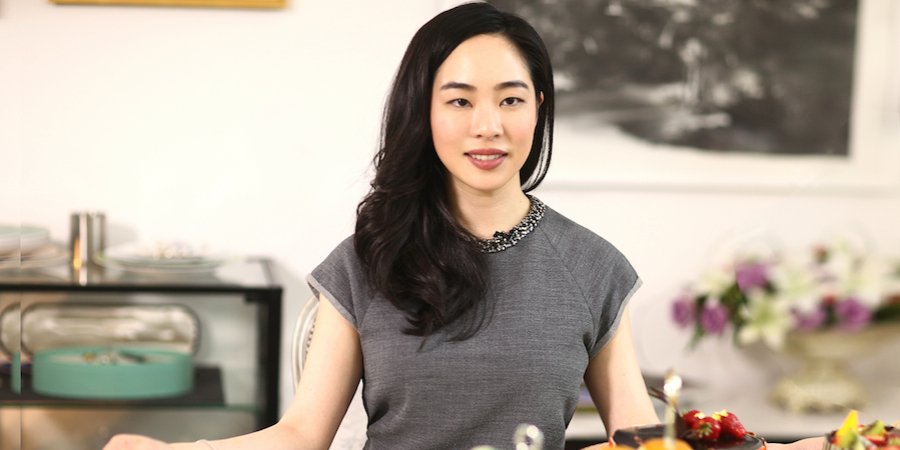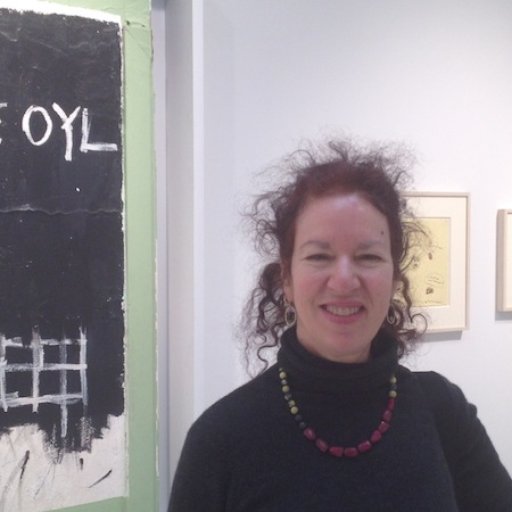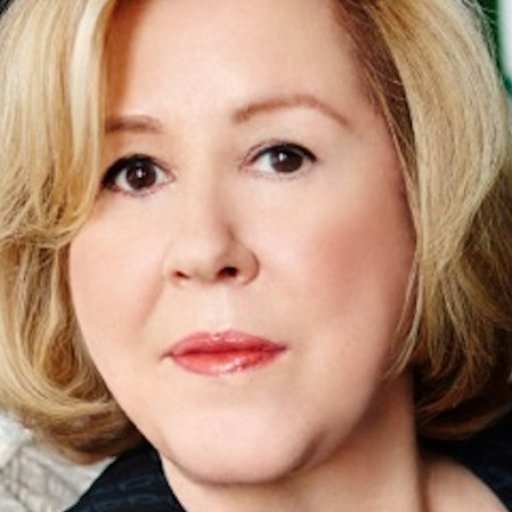There’s a different kind of cultural revolution taking place in China today—this one targeting the alleged bad manners of the country’s new rich. Championing polish and poise, Hong Kong-native Sara Jane Ho is leading the way as the founder of Institute Sarita, a finishing school in Beijing that teaches international-style customs to enterprising young women hoping to rise elegantly up the social ladder. Here, you can learn how to set a table, walk in heels, arrange flowers, and properly admire contemporary art—all for a pretty penny, with courses ranging from $3,200 to $16,000.
Although it may sound like a training ground for 19th-century aristocrats, the Institute Sarita is marketed to the modern Chinese woman making her first grand tour abroad, where an etiquette misstep risks broadcasting that she has more cash than class. In some ways, the program is a corollary to the government’s headline-grabbing campaign during the 2008 Beijing Olympics to suppress locals’ unsightly habits of spitting, belching, and swearing in public.
Known as the "Miss Manners" of Bejing, Ho has a pedigreed resume well suited to her enterprise. She is a graduate of Phillips Exeter,Georgetown University, Harvard Business School, and most recently Switzerland’s famed finishing school the Institut Villa Pierrefeu, where she earned a diploma in "International Etiquette & Protocol."
In addition to being an expert in manners, the refined 28-year-old is an art collector. Over email, Hospoke to Artspace about customs of collecting in China, the importance of correctness in taste, and the ill-mannered Chinese art market.
As both an art collector and a renowned expert in the niceties of etiquette, do you see an overlap in what you call “the importance of being finished” and the cultural value in appreciating art? Can art collecting—or even just looking at art—refine a person, instilling better manners and poise?
At Institute Sarita, our mission is to take the modern-day woman by the hand, in this time of great change and pressure, and lead her to a better, more fulfilling life of family-oriented values, excellent taste, and quality ideas. The cultural value of appreciating art and the heritage or new perspective it can give you is very much included in that.
What role does contemporary art and collecting play in how one makes their way through society?
While people have different motivations for viewing art or collecting, I would like to caution against seeing art as a must or a steppingstone for making one’s way through society. Art is accessible to all, thanks to museums, galleries, Artspace, and the like. But in relation to society, with its newfound wealth, Chinese are adopting a higher measure of quality of life. They have deeper desires, hold themselves to higher standards, and want to earn the respect of others—these are all indicators of social progress. So as a society becomes richer, it is natural to aspire to more sophisticated—and expensive—hobbies.
In your finishing school in Beijing, you teach young women etiquette of all kinds. Does art ever enter the picture in your curriculum?
In my finishing school, we teach that being a true “lady” is not determined by how rich you are in terms of money but also in culture and experience. I want my students to feel the responsibility of inheriting a 5,000-year-old civilization—China—and preserving it for the next generation, and that includes the arts, both old and new.
Refined people seek refined works of artists around them. When you buy a Louis Vuitton bag, there will be thousands of women around the world who have the same bag. When you buy a sculpture or painting to hang in your home, it defines you in a much stronger and more unique way.
We have an Art Appreciation Lesson where we take our student to the Ullens Center for Contemporary Art in Beijing’s 798 art district, of which I am a young patron. The UCCA is a breath of fresh air, because they show things that are not very commercial and they contribute to the community by helping young artists. They also have a dynamic education program, which is rare for museums in China.
This May, we will also be taking students to Art Basel Hong Kong, which they are very excited about.
Can one teach taste?
Taste is a funny thing. On the one hand, it's very personal and subjective. On the other, it is a subject open to scrutiny by all others. When teaching my students excellent taste, I do not tell them that something is either “good” or “bad” per se but rather break down the components of a style and tell them why a particular object or style is well-received or not. That way, they understand the difference between classic French interior versus dictator kitsch.
What do you collect yourself?
I prefer to focus on artists that are working, rather than on artists who are already well recognized by the market and as such do not need me. And I mostly collect Chinese art, given my own heritage and the fact that my life is very much in China. But apart from these very personal reasons, there are three reasons I am positive about Chinese art.
Firstly, Chinese artists are classically trained to the point of exceptional mastery. I think it is important for a contemporary artist to regurgitate classical drawings before launching into strange new concepts, because you need to be very familiar with traditional painters’ work and technique before doing something that is truly innovative. For example, Picasso learned to paint and draw Old Masters before he began to deconstruct images.
Secondly, many periods of great change were important periods for art: the Renaissance, the French Revolution, the Romantic period that followed, the Movida in Spain, the modern Bauhaus movement in postwar Germany. I can see that China is going through such a period today, and it will be regarded as an important period for Chinese art in the future.
Lastly, for artists to flourish, you need buyers. Chinese are becoming richer and, while they are not all art collectors, they are potential collectors. More and more Chinese are proud to support Chinese art. At the end of the day it is individuals who collect and support an artist, not the museums.
How did you first begin collecting?
My first piece was purchased very much on impulse—when I saw it, I knew I had to have it. It was Lips by Zhang Shujian. This was a very meaningful starter piece to me because it sits at the border of two important trends of Chinese contemporary art. For one thing, the work is very Western and contemporary in terms of its composition and subject matter. Zhang Shujian drew his lover’s lips entirely in pencil with a mesmerizing gloss effect. It reminds me of Cindy Sherman—the work could pass for a photograph and indeed many visitors to my home initially assume so.
For another thing, the technique is similar to the very realistic painters who are popular in China right now—a trend that was inherited from Russian propaganda paintings. For example Ai Xuan, Chen Danqing, and Wang Yidong. Like most Chinese artists, Zhang Shujian is technically very skilled, but his choice of subject matter is contemporary. I feel that I can relate to him and the way he borders these two styles because it reflects my own heritage. I am very Chinese, being from Hong Kong, but also very Western, having been educated abroad since boarding school.
Zhang Shujian is also my age, so I feel a close affinity with him. He was born in the post-1970s period, and as a result his work is removed from political concerns—unlike early Chinese artists who painted pictures of Mao and Communism, et cetera. I like that young Chinese artists don’t feel the need to make a statement on political issues in their work. And I feel that the market is being driven by people who share my taste, instead of by the early buyers, who were Westerners wanting to buy the Mao painting.
I prefer to meet the artist and visit his studio before buying any work. I met Zhang Shujian at his home studio on the outskirts of Beijing and found him disarming. He is young and sweet and nice and has an innocent, childlike quality about him. He has been identified as one of the most promising young Chinese artists of his generation, but he is not labeled as “being Chinese before being an artist,” which I like. Friends who come to my house and see the work would never guess that it's painted by a Chinese artist.
Material goods and commercial culture have gained enormous prominence in China today, and over the past decade more and more of the newly rich show an interested in collecting art. Oftentimes, however, young collectors pay more attention to the price tags than the piece itself, focusing on art's use as place to store money rather than a repository of aesthetic edification. What do you feel is the appropriate way for a new collector to view buying contemporary art?
I believe that the personality and mindset of the artist is as important as the work he produces. I try to look for an artist who is serious about his job and career, because art is a serious thing and long-term, just like any other career. It's important for me to collect an artist who has a special universe or a particular way of looking at things, because I want art that broadens my horizons and gives me an insight into someone else’s mind.
The first impression that a work gives me is the most important thing when buying art. If I didn’t like it at first sight, or if it didn't impact me in any significant way, I wouldn't even think of buying it. I think that a lot of Chinese buyers are not confident of their taste, and thus look to the price tag. However, I can say that I'm confident in knowing what I like.
Recently, two rather impolite strains in the Chinese art market have been emerging: an alarming number of buyers are failing to pay for works they win at auction, and forgeries are a widespread problem in these sales. As an expert in etiquette, what do you make of this situation, and what can be done to curb it?
While exceptional forgeries show the ingeniousness of Chinese people—over here you can even be sold fake eggs at local produce markets!—it's of course very inconsiderate and ill-mannered to then use these forgeries to deceive others and profit from them.
Let’s not forget that 30 years ago, China was an incipient basket case. There was a shortage of electricity, people were going hungry and fighting to get to the front of the food ration line—nobody was thinking about personal space. Developing countries have a developing-country mentality: survival. Only now that China is approaching global power and its citizens are clothed and fed can the society think about respect for others, confidence, morality.
I believe that each generation is getting better and better. Most of the buyers failing to honor their commitments are from the older generation who had no education, no international exposure, and lived through the worst of China’s recent history. The new generation, especially those who have studied overseas, are more aware of and committed to upholding international standards and values.
What is the culture of collecting like in China?
There is very little curatorial independence in China right now because art is a young market and lacks structure. It is very important for me to rely on people who I trust when it comes to collecting art. The fact that it is difficult to receive independent advice on artists in China means I must rely on trustworthy galleries to guide my choice and myself (which is also why I always insist on meeting the artist).
China has been making a big show on the world stage this year. Recently, it was the featured country at New York’s Armory Show. Hong Kong’s K11 Art Foundation also made an appearance there in the person of Adrian Cheng, who spoke about helping young artists find a path to the international art world. What do you think of the bold initiatives like these to bring wider international exposure to Chinese artists?
I admire Adrian’s efforts and initiatives to bring Chinese artists to the global stage—though sadly I couldn’t leave Beijing to attend the show—for two reasons. Firstly, apart from the UCCA, museums are very young in China and they are not as professional. As a result they do not have the trust or means to push young artists. Secondly, the patron system in China is not very developed—but this will change with social progress, as patronage is a next step after newfound wealth.



























